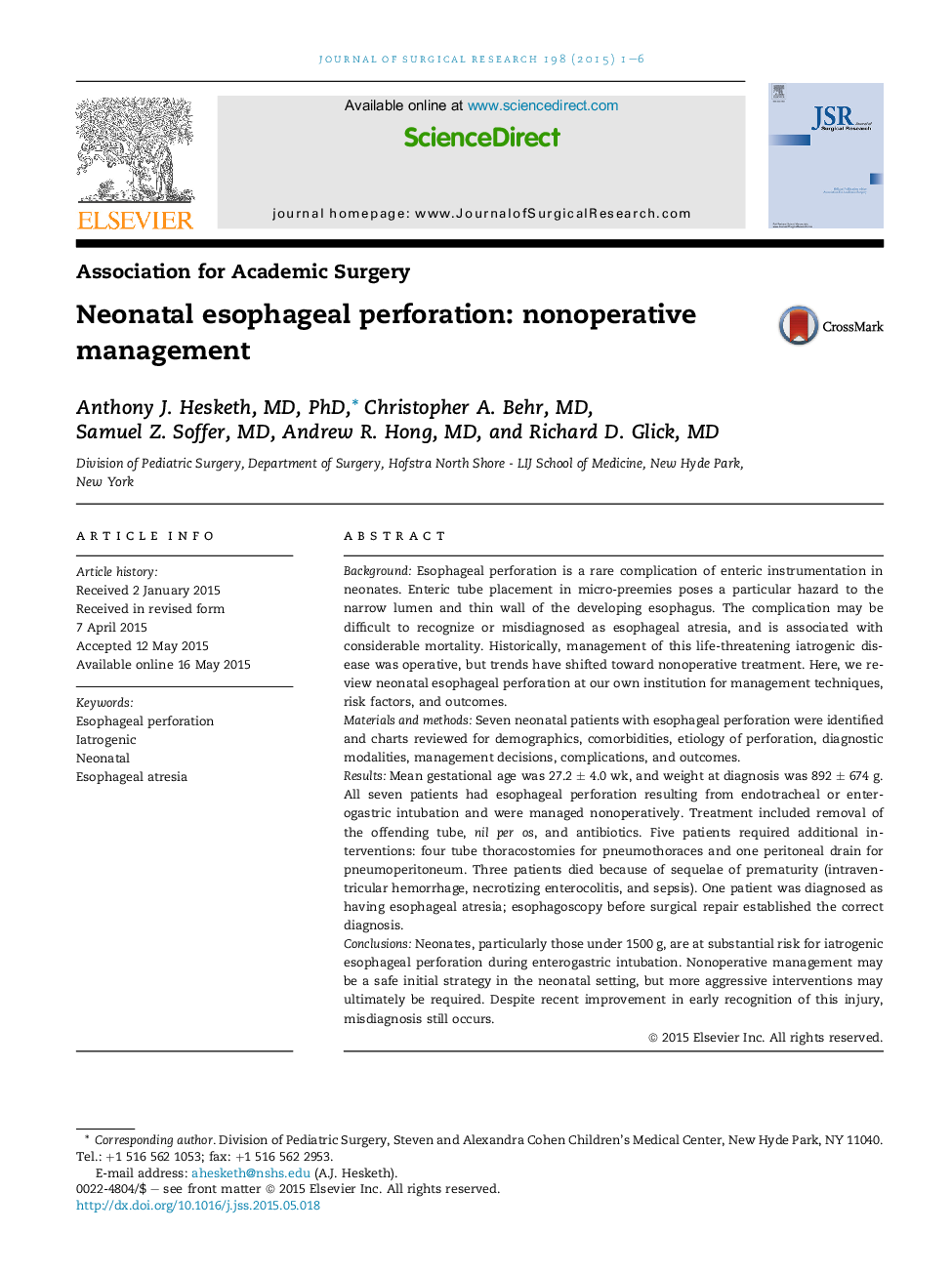| کد مقاله | کد نشریه | سال انتشار | مقاله انگلیسی | نسخه تمام متن |
|---|---|---|---|---|
| 4299542 | 1288394 | 2015 | 6 صفحه PDF | دانلود رایگان |
BackgroundEsophageal perforation is a rare complication of enteric instrumentation in neonates. Enteric tube placement in micro-preemies poses a particular hazard to the narrow lumen and thin wall of the developing esophagus. The complication may be difficult to recognize or misdiagnosed as esophageal atresia, and is associated with considerable mortality. Historically, management of this life-threatening iatrogenic disease was operative, but trends have shifted toward nonoperative treatment. Here, we review neonatal esophageal perforation at our own institution for management techniques, risk factors, and outcomes.Materials and methodsSeven neonatal patients with esophageal perforation were identified and charts reviewed for demographics, comorbidities, etiology of perforation, diagnostic modalities, management decisions, complications, and outcomes.ResultsMean gestational age was 27.2 ± 4.0 wk, and weight at diagnosis was 892 ± 674 g. All seven patients had esophageal perforation resulting from endotracheal or enterogastric intubation and were managed nonoperatively. Treatment included removal of the offending tube, nil per os, and antibiotics. Five patients required additional interventions: four tube thoracostomies for pneumothoraces and one peritoneal drain for pneumoperitoneum. Three patients died because of sequelae of prematurity (intraventricular hemorrhage, necrotizing enterocolitis, and sepsis). One patient was diagnosed as having esophageal atresia; esophagoscopy before surgical repair established the correct diagnosis.ConclusionsNeonates, particularly those under 1500 g, are at substantial risk for iatrogenic esophageal perforation during enterogastric intubation. Nonoperative management may be a safe initial strategy in the neonatal setting, but more aggressive interventions may ultimately be required. Despite recent improvement in early recognition of this injury, misdiagnosis still occurs.
Journal: Journal of Surgical Research - Volume 198, Issue 1, September 2015, Pages 1–6
